The Galleries at Moore present Walter Robinson: Paintings and Other Indulgences
- PHILADELPHIA, Pennsylvania
- /
- January 07, 2016
The Galleries at Moore College of Art & Design are pleased to announce Walter Robinson: Paintings and Other Indulgences, the first museum survey of the prolific New York-based artist’s paintings from 1979 to 2014. The eighty paintings on view provide a broad selection of the
artist’s work, including the pulp-novel romance paintings which garnered Robinson critical recognition in the early 1980s, still lifes featuring over-the-counter pharmaceuticals, recent representations of Lands’ End clothing models, online erotic selfies, and many others.
Born in Wilmington, Delaware, in 1950, and raised in Tulsa, Oklahoma, Robinson moved to Manhattan in 1968 to pursue an art history degree at Columbia University. By the late 1970s he had become a critic for Art in America, co-founder of Printed Matter, Inc., co-editor and publisher of Art-Rite magazine, and a member of the influential artist collective Collaborative Projects (Colab.) From 1983 to 1985 Robinson was art editor of the East Village Eye, and from 1996 to 2012 he was editor of the online journal Artnet Magazine.
In 1980, Robinson presented his earliest paintings at the historic Times Square Show organized by Colab at an abandoned building on West 41st Street, and within two years was exhibiting modestly scaled but brashly colored paintings of pulp romance cover illustrations at the seminal Metro Pictures gallery. In a manner similar to Richard Prince and Jack Goldstein, he appropriated tropes of popular culture as a means of celebrating the emotional dynamics of images from mass media. Whereas Prince and Goldstein mined photography and film, Robinson examined painting itself, taking lurid illustrations from the 1940s and 1950s and re-representing them in a style culled from “how to paint”
books. Critically commenting on painting’s role as both commercial enterprise and intimate act, he imbued his work with – in the words of art critic Carlo McCormick – “a devious sense of irony done with incredible sincerity.” His square-jawed detective types and swooning vixens penetrate the psyche as archetypes of desire rather than clichés.
By the mid-1980s, Robinson’s painting style had matured and become more succinct, with gestural flourishes that pastiched the Abstract Expressionists’ sacrosanct personal touch. He also strayed beyond the borders of appropriation by painting from his own photographs, while broadening his sphere of subjects to include Morandi-like arrangements of beer cans and bottles, monolithic over-the-counter pharmaceuticals and toiletries from Excedrin to Tampax (with allusive titles like Pain Killers and Fertility), and even outright bastions of kitsch, such as greeting-card kittens and spin art.
Recognizing the conceptual bent of Robinson’s work, even as he seemed to be on the brink of genre painting, critic Holland Cotter noted, “his still lifes of consumer amenities were like painted readymades.” At the same time, Robinson became a chronicler of the burgeoning East Village scene, capturing unposed, loosely rendered, yet spot-on portrayals of dozens of luminaries including gallerists Annie Herron and Doug Milford, writers Joseph Masheck and Carlo McCormick, and artists Martin Wong, Mark Kostabi, Ellen Berkenblit, and Mike Bidlo.
In paintings from 2000 to the present – whether exhaustive series of individual burgers from every imaginable fast-food restaurant, mail-order clothing models, or online porn selfies – Robinson addresses the collision of capital and everyday cravings in a media-saturated world. Among the most recent works in the exhibition are paintings in which single packs of cigarettes or liquor bottles are presented frieze-style, as frontally and iconically as possible. In the artist’s words, “the idea was to revive the still life by remaking it as an object of desire—putting back the content that modernism [expunged] when it transformed the emblematic Dutch still life into a formalist exercise.” The bold geometries of these soulful, wistful works allude subversively to this “content restoration” in their subtle references to abstractions by modernists like Richard Diebenkorn and Brice Marden.
The exhibition is curated by Barry Blinderman, director of University Galleries at Illinois State University, and is accompanied by a fully illustrated catalogue with essays by Blinderman, Glenn O’Brien, Vanessa Meikle Schulman and Charles F. Stuckey.
An opening reception for the exhibition is scheduled for Friday January 22, 2016 from 6 – 8 pm.
A complete list of events and programs scheduled in conjunction with the exhibition is available at
www.thegalleriesatmoore.org


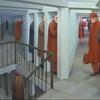
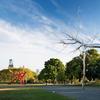
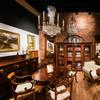

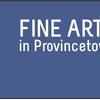
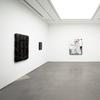

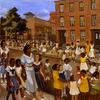
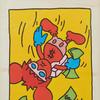
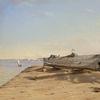

100x100_c.jpg)

